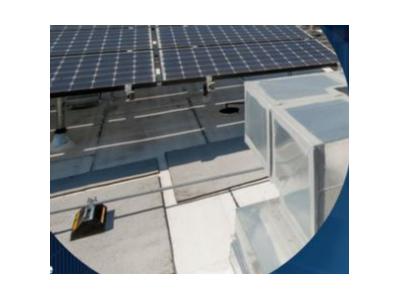
Direct Outside Air Systems (DOAS) and traditional Air Handling Units (AHUs) are both used in building HVAC, what are the key differences?
Direct Outside Air Systems (DOAS) and traditional Air Handling Units (AHUs) are both used in building HVAC (Heating, Ventilation, and Air Conditioning) systems, but they serve different purposes and have distinct advantages and disadvantages.
Direct Outside Air Systems (DOAS)
Benefits:
1. Improved Indoor Air Quality: DOAS units supply fresh, conditioned outside air directly to the occupied spaces, improving indoor air quality.
2. Energy Efficiency: They can be more energy-efficient, particularly in buildings where internal loads are high. DOAS units pre-treat the air, reducing the load on other HVAC systems.
3. Humidity Control: More effective in controlling humidity as they can dehumidify the incoming fresh air separately.
4. Reduced Size of Other HVAC Equipment: Since DOAS handles most of the ventilation load, other HVAC components like air conditioners can be smaller.
Pitfalls:
1. Higher Initial Cost: DOAS systems can be more expensive to install due to the need for separate ductwork and additional controls.
2. Complexity in Design and Operation: They require careful design to integrate with other HVAC systems and can be complex to operate and maintain.
3. Potential for Over-Ventilation: Without proper controls, DOAS can lead to over-ventilation, increasing energy costs.
Traditional Air Handling Units (AHUs)
Benefits:
1. Simplicity: Traditional AHUs are relatively straightforward in design and operation, making them easier to understand and maintain.
2. Flexibility: They are versatile and can be designed to meet a wide range of building requirements.
3. Cost-Effectiveness: Generally, traditional AHUs have a lower initial cost compared to DOAS.
Pitfalls:
1. Lower Indoor Air Quality: Since AHUs typically recirculate a large portion of indoor air, they might not provide the same level of fresh air as DOAS, potentially affecting indoor air quality.
2. Energy Efficiency Challenges: Balancing energy efficiency with adequate ventilation can be more challenging, especially in buildings with high occupancy or pollutant loads.
3. Humidity Control Issues: AHUs may struggle with humidity control, especially in humid climates, as they mix fresh air with recirculated air.
Conclusion
The choice between a DOAS and a traditional AHU depends on specific building requirements, including indoor air quality needs, climate, energy efficiency goals, and budget constraints. DOAS systems offer better control over ventilation and indoor air quality but at a higher cost and complexity. Traditional AHUs are simpler and more cost-effective but might not meet the same standards for air quality and energy efficiency.




